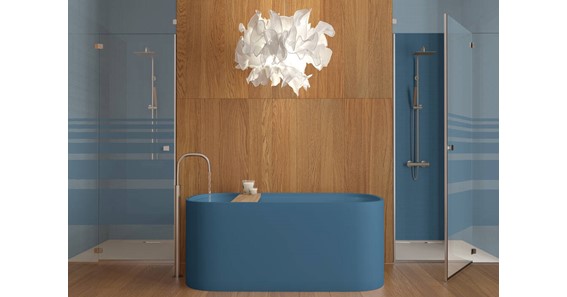Introduction
Glass curtain walls have become an increasingly popular choice for interior design in modern buildings. They offer a sophisticated, stylish look that can provide both added privacy and natural light to any space.
Glass curtain wall interior is perfect for creating a unique atmosphere while providing unparalleled functionality. With their vast array of customization options, they can be adapted to any room size or style. Not only do they create a stunning aesthetic but they also protect the interior from harsh weather conditions and sound pollution while adding value to the building itself.
Click here – Time-Saving Tips for Ordering Vegetarian Meals Online
Definition of Glass Curtain Wall
The glass curtain wall is a type of wall construction that is made of a frame and panels of glass. This type of wall has become increasingly popular in the past few decades due to its ability to provide an aesthetically pleasing look while also allowing for more natural light and ventilation.
A glass curtain wall consists of an outermost panel, which is typically made from either single or double glazed tempered glass, sandwiched between aluminum frames. These frames are connected together with mullions and transoms, which provide structural support and stability to the entire assembly. The frames are then attached to the building’s structure via anchors or bolts that run through the entire thickness of each panel.
Glass curtain walls can be used in both interior and exterior applications, depending on what type of performance characteristics are desired for a particular project. For instance, if energy efficiency is desired or required by local building codes, insulated glazing may be used instead of single glazing in order to reduce heat transfer through the walls from inside to outside or vice versa. Additionally, reflective coatings can be applied directly onto the exterior surface of these panels in order to reduce solar heat gain during hot summer months or reduce glare from adjacent windows during sunny days.
History of Glass Curtain Walls
The history of glass curtain walls is an interesting one, and can be traced back to the late 19th century. The first recorded use of glass curtain walls is believed to have been in 1889, when Stanford White designed the New York Stock Exchange building. This was a revolutionary concept at the time, as it allowed for an unprecedented amount of natural light into the building and provided an open view of exterior surroundings.
Since then, glass curtain walls have become increasingly popular and are now used in a variety of architectural designs. They are most commonly used as external wall cladding systems on high-rise buildings and skyscrapers where they provide protection from weather elements while still allowing plenty of natural light into the interior spaces.
Glass curtain walls also offer numerous benefits over traditional masonry wall systems such as improved insulation properties due to their airtight construction; increased energy efficiency; less maintenance requirements; improved acoustic performance; and reduced labor costs due to their lighter weight compared with other materials such as brick or stone. In addition, they are aesthetically pleasing with minimal visible frames or mullions which allow for unobstructed views outside.
Click here – The Nutritional Benefits of Eating Black Cod Fish
Benefits of a Glass Curtain Wall
A glass curtain wall is an increasingly popular architectural feature that is being used in both commercial and residential buildings. This type of wall offers many benefits, including improved aesthetics, energy efficiency, and noise reduction. Here are some of the key benefits of using a glass curtain wall in your building:
- Aesthetic Appeal: The sleek lines and modern look of a glass curtain wall can significantly improve the aesthetic appeal of any building’s exterior. Not only does this add to the overall beauty and style of the structure, but it can also help to boost its market value if you ever decide to sell it down the line.
- Energy Efficiency: Glass curtain walls are incredibly efficient at keeping heat in during cold winter months while also helping to keep unwanted hot air out during summer months. This helps reduce energy consumption by keeping your interior temperature more consistent all year round, leading to lower heating and cooling bills over time.
- Noise Reduction: The dense construction material used for these walls helps reduce outside noise levels significantly when compared with standard brick or stone exterior walls that don’t offer any sound insulation at all.
Types of Interior Glass Curtains
Interior glass curtains can be a great way to bring natural light into a home while adding a modern aesthetic. There are many types of interior glass curtains available on the market today, each with their own unique characteristics and benefits. From frosted to stained glass, these curtains can add privacy while still letting in plenty of light.
- Frosted Glass Curtains are one of the most popular choices for interior glass curtains. These curtains feature an opaque design that allows light in but also gives you privacy from onlookers outside your home. Frosted glass is ideal for bedrooms or bathrooms as it adds a touch of elegance and style to any room without sacrificing privacy or security.
- Stained Glass Curtains are another popular option for interiors, providing vibrant colors and intricate patterns that give any room an extra bit of character and charm. Stained-glass is perfect if you’re looking to bring some life into an otherwise dull space – they can come in various shapes, sizes and designs so you can find something that fits perfectly into your home’s look and feel.
- Mirrored Glass Curtains provide a more modern look with their glossy finishes and reflective surfaces which help create the illusion of more space by reflecting light throughout the room.
Considerations for Installing an Interior Glass Curtain Wall
Interior glass curtain walls are an increasingly popular way to add style and sophistication to any room. They offer plenty of benefits, from increased privacy and improved soundproofing to creating a stunning visual effect. However, before you install an interior glass curtain wall, there are some important considerations you should keep in mind.
First and foremost, it’s essential that you select the right type of glass for your interior glass curtain wall. You’ll need to choose between insulated or non-insulated glass depending on the level of heat or cold insulation you require. Insulated glazing can help reduce energy bills by keeping out unwanted heat in summer and cold air in winter.
The second consideration is how much light transmission is required for the space. If you want maximum light transmission, opt for clear or low-iron glazing as this will allow more natural light into your room than tinted or reflective glasses will provide. Alternatively, if privacy is a priority then consider using tinted or reflective glasses with a higher Light Transmittance Value (LTV). Lastly, consider which type of frame best suits the aesthetic of your space – either aluminum frames for minimalism or wooden frames for a more traditional look.
Conclusion
In conclusion, the glass curtain wall interior is an increasingly popular choice when it comes to modern interior designs. Its ability to bring in natural light and create a feeling of openness in an otherwise confined space make it an attractive option for contemporary homes and businesses alike. It is also highly customizable, allowing for a variety of colors, textures, and finishes that can be tailored to your specific needs. With its numerous advantages, glass curtain walls are sure to become even more popular as time goes on!






